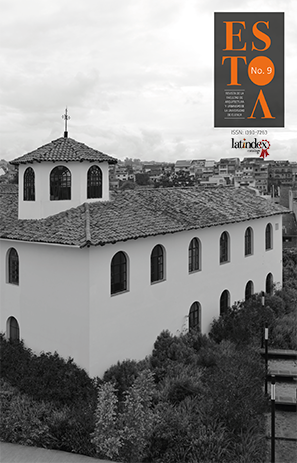The public space dedicated to leisure in the century XXI and the search of Urban Oasis
DOI:
https://doi.org/10.18537/est.v005.n009.06Abstract
Squares, parks and gardens represent social meeting places dedicated to different recreational, leisure and outdoor activities. These should provide to users a moment of relaxation, enjoyment and carefree. At present, there are interventions more concerned with the physical aspects of the place than with the socio-cultural activities that take place in them. The lack of accessibility, security, offer and a knowledge experience have placed the public space at a distinct disadvantage with private spaces dedicated to satisfying the ludic activities. It is necessary the analysis and identification of physical, social and cultural factors to promote the spatiality of the users, through a playful offer and a sense of security and well-being with the objective of creating a lived experience in the perception of the users. A methodological proposal for the diagnosis, consolidation or restructuring of the public space is presented.
Keywords: Public Space, Urban Oasis, Tangible Heritage and PASEO
Downloads
References
Cisneros, A. (2006). El sentido del espacio. México: Miguel Ángel Porrúa.
De Certeau, M. (1996). La invención de lo cotidiano. 1 Arte de hacer. México: UIA, ITESO y CEMCA.
Hesíodo (1986) Teogonía. Trabajos y días. Escudo. Certamen (A. y M. A. Martín Sánchez, trad.) Madrid: Alianza
Ipiña, O. (2010) “Oasis urbanos” La construcción y transformación de los espacios de ocio. Estudio de caso: La Plaza de Garibaldi en la Ciudad de México. En el XII Seminario- Taller de la Red Mexicana de Ciudades. Hacia la Sustentabilidad. Conferencia llevado a cabo en Guanajuato, Gto.
Llanos, D. y Martínez R. (2010). Espacios públicos urbanos, convivencia y seguridad ciudadana. Ciudades, N° 86, abril-junio, 39-44.
Marc, A. (1992) Los no lugares “Espacios del anonimato”. Una antropología de la sobremodernidad. España: Guedisa
Medina, F. (1998). El centro comercial: una “burbuja de cristal”. Estudios sobre las culturas contemporáneas, Vol. IV, número 008, pp. 61-91.
Muñoz, F. (2008). Urbanalización. Barcelona, España: Gustavo Gili.
Rabotnikof, N. (2005) En busca de un lugar común. El espacio público en la teoría política contemporánea. Instituto de Investigaciones Filosóficas de la UNAM, México.
Ramírez, P. (2003). El espacio público: ciudad y ciudadanía. De los conceptos a los problemas de la vida pública local. En Espacio público y reconstrucción de ciudadanía (pp. 360). México: FLACSO.
Tapia, M. y Park J. (2012) Patrimonio tangible e intangible: Aportes al debate del distingo, desde las “prácticas agroculturales”. Revista de Ciencias Sociales (RCS), Vol. XVIII N°4. Octubre-diciembre, pp. 684-701
Verdú, V. El sueño del centro comercial. [en línea] Identidad y Comunidad. [fecha de consulta: 23 de abril 2006]. Disponible en: <http://identidadycomunidad.blogia.com/2005/090302-el-sueno-del-centro-comercial.php>
Downloads
Published
How to Cite
Issue
Section
License
The Journal declines any responsibility for possible conflicts derived from the authorship of the works that are published in it.
The University of Cuenca in Ecuador conserves the patrimonial rights (copyright) of the published works and will favor the reuse of the same ones, these can be: copy, use, diffuse, transmit and expose publicly.
Unless otherwise indicated, all contents of the electronic edition are distributed under a Creative Commons Attribution-NonCommercial-ShareAlike 4.0 International License.




